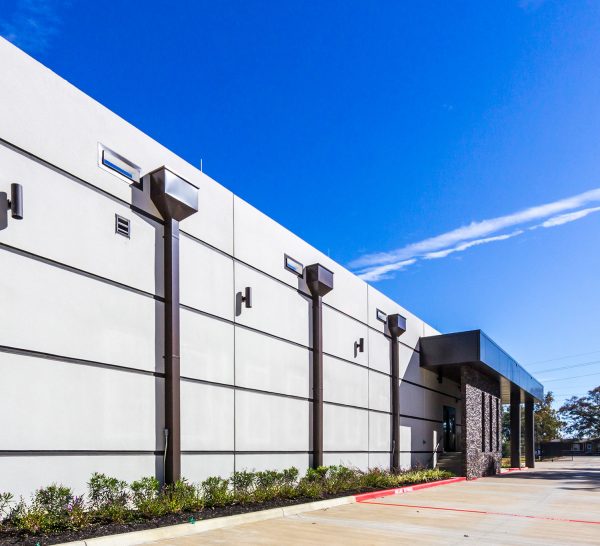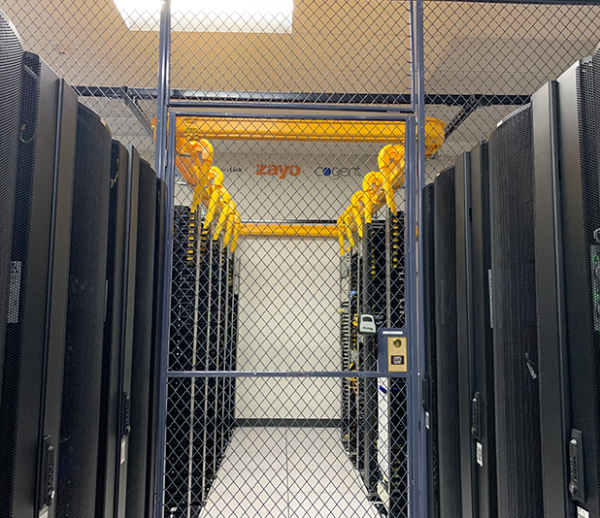The Internet is often described as a “network of networks.” Each of these networks, known as Autonomous Systems (ASes), must find a way to pass data between one another. That’s where the Border Gateway Protocol (BGP) comes in.
BGP acts like the internet’s postal service. Once you send information, it finds the most efficient route through thousands of interconnected networks, ensuring it reaches its destination quickly and reliably. Without BGP, the internet as we know it would simply not function.
In this article, we’ll examine how BGP works, why it matters, its challenges, and the steps to make it more secure.
We’ll also explore how businesses like yours can benefit from smarter BGP strategies when building resilient, high-performance networks.
What is Border Gateway Protocol (BGP)?
BGP is a path-vector routing protocol. That means it exchanges information about which networks traffic must pass through, allowing routers to understand the full path to a destination.
By keeping track of AS numbers along the way, BGP ensures that loops are avoided and that policy decisions can shape the route taken.
Unlike simpler routing protocols that focus only on the shortest path, BGP takes a more nuanced approach.
It considers multiple attributes, such as policy rules, local preferences, and administrative decisions, so that organizations have control over how traffic enters and leaves their networks.
There are two main types of BGP:
- External BGP (eBGP): Used to exchange routes between different Autonomous Systems. For example, an enterprise might use eBGP to communicate with its internet service provider.
- Internal BGP (iBGP): Used within a single Autonomous System, often in large enterprises or cloud environments, to coordinate routing decisions across multiple routers.
This flexibility allows BGP to scale across the entire Internet, which today includes more than 75,000 ASes worldwide.
Why Border Gateway Protocol Matters
The internet is constantly changing. New networks are added, providers merge, and infrastructure evolves. BGP provides the adaptability needed to keep traffic flowing smoothly in this dynamic environment.
One of its most important benefits is multihoming. Businesses and data centers often connect to multiple internet providers for network redundancy. BGP allows traffic to shift seamlessly between providers if one goes offline, reducing downtime and ensuring business continuity.
Another key advantage is policy control. Organizations can set preferences for certain routes, choose to avoid others, or prioritize cost-effective paths, making BGP far more flexible than traditional routing protocols.
Finally, BGP supports massive scalability. With hundreds of thousands of routes advertised globally, it remains the only protocol capable of handling the complexity of modern internet routing.
BGP Routing Tables Explained
Every BGP router maintains a routing table containing all known paths to various destinations. Each entry lists the prefix (IP block), the next-hop router, and the sequence of ASes the route passes through.
Today, global BGP routing tables exceed 900,000 routes, and their growth poses challenges: routers must have enough memory and processing power to handle them.
Without efficient table management, routers can become overwhelmed, leading to instability. For enterprises, monitoring table size helps anticipate upgrades and maintain performance.
Benefits of BGP
Implementing BGP brings significant advantages for organizations that rely on strong, resilient connectivity.
Beyond keeping the internet functional, BGP delivers real value to businesses operating across multiple providers, regions, or platforms.
Improved Network Resilience
BGP enables seamless failover between multiple carriers. If one provider suffers downtime, traffic is automatically rerouted through another, minimizing outages and protecting revenue streams.
Greater Flexibility and Control
Unlike basic routing protocols, BGP lets businesses define their own policies. They can prefer certain providers, avoid specific routes, or balance traffic for cost savings and performance.
Scalability for Growing Networks
As enterprises expand, BGP can handle hundreds of thousands of routes without issue. This scalability ensures networks can keep pace with growth, new sites, and cloud adoption.
Support for Multihoming
By supporting multiple connections to the internet, BGP reduces dependency on a single ISP. This multihoming capability improves reliability and boosts negotiating power with providers.
Enhanced Performance for Users
With BGP, traffic can take the most efficient route available. That means faster load times, lower latency and a smoother digital experience for customers and employees.
Real-World Use Cases for BGP
Internet Exchanges and Peering
Internet Exchange Points (IXPs) allow networks to connect directly and exchange traffic without going through third-party providers.
BGP is the mechanism that makes this possible. By advertising which IP addresses they manage, networks ensure data flows directly to the correct destination, improving performance and reducing latency.
Redundant and Multicarrier Connections
Modern businesses can’t afford outages. Many rely on redundant network designs, connecting to multiple carriers at once.
BGP manages these connections, automatically rerouting traffic when an issue occurs.
The Role of BGP in Data Centers
Modern data centers rely heavily on BGP for connectivity. When a facility connects to multiple carriers, BGP manages how traffic flows in and out, ensuring uptime and cost efficiency.
BGP also enables direct peering with cloud providers, making hybrid and multi-cloud strategies possible.
At TRG Datacenters, BGP is integral to services that combine carrier diversity, low latency, and reliable peering at IXPs.
Blending multiple carriers into a single, optimized connection, we help clients achieve resilience and performance.
Risks and Challenges of BGP
While BGP is vital to the functioning of the Internet, it has notable weaknesses.
Designed in an era when trust was implicit between networks, BGP assumes that all routing information shared is accurate. Unfortunately, that’s not always the case.
The Fragile Trust Model
Because BGP doesn’t have built-in authentication, malicious actors or misconfigured routers can advertise incorrect routes.
This can divert traffic through unintended paths or make destinations completely unreachable.
Hijacking and Route Leaks
BGP hijacking occurs when a network falsely announces ownership of IP prefixes it doesn’t control. It can be done deliberately to intercept data or disrupt services, or accidentally through misconfiguration.
Route leaks are a related issue, where legitimate routes are improperly forwarded, leading to instability and outages.
National Security Concerns
The impact of these weaknesses goes beyond isolated outages. Governments and regulators have raised concerns that unprotected BGP could be exploited to compromise critical infrastructure.
Strengthening BGP security is increasingly seen as a matter of national importance.
Securing BGP: Emerging Solutions and Best Practices
The networking community is working to address BGP’s vulnerabilities. Several initiatives and technologies have been developed to improve trust and security in routing.
RPKI and Route Origin Validation
Resource Public Key Infrastructure (RPKI) introduces cryptographic validation of route announcements.
Tiying IP blocks to digital certificates ensures that only legitimate holders of an IP range can advertise it. Routers that support Route Origin Validation (ROV) can then reject suspicious announcements.
MANRS (Mutually Agreed Norms for Routing Security)
MANRS is a global initiative encouraging networks to adopt best practices, including filtering invalid routes, preventing spoofing, and enabling RPKI.
Supported by industry leaders, MANRS is helping raise the baseline security level of the global internet.
Transparency and Accountability
Public dashboards and monitoring tools now provide greater visibility into global routing behavior.
This helps operators detect and fix misconfigurations faster while holding networks accountable for maintaining strong security practices.
Future of BGP and Internet Routing
While BGP remains the internet’s backbone, questions about its future are emerging.
Newer frameworks like BGPsec aim to add built-in cryptographic protections, while others propose entirely different architectures for global routing.
Automation is also changing how routing policies are managed, with software-defined networking (SDN) promising more flexible, programmable approaches.
Still, given its resilience and adaptability, BGP will likely remain dominant for years to come, albeit with essential upgrades to security and efficiency.
What This Means for Your Business
For businesses, the importance of BGP isn’t just academic. It directly affects the availability, performance, and security of your online services.
Enhanced Resilience
By leveraging BGP with redundant providers, organizations can ensure seamless failover during outages. This resilience reduces downtime and protects revenue.
Smarter Peering and Network Control
BGP allows companies to fine-tune how traffic enters and leaves their networks. With the right strategy, you can lower costs, improve user experience, and better manage growth.
Planning often starts with understanding how much bandwidth is needed to scale effectively.
Stronger Security Posture
Adopting RPKI, filtering routes, and working with partners who follow MANRS principles strengthens your overall security posture. This reduces the risk of downtime and ensures that your data remains safe in transit.
At TRG Datacenters, we help clients design network architectures that fully utilise BGP’s flexibility while minimizing risks.
We can support your goals whether you’re looking to connect through multiple carriers, peer directly at an internet exchange, or strengthen your routing security.
Checklist for Businesses Using BGP
If your organization relies on BGP, a proactive approach is essential. A simple checklist includes:
- Ensuring your providers filter invalid routes.
- Deploying RPKI validation where possible.
- Testing failover between multiple carriers.
- Monitoring BGP sessions and routing tables for anomalies.
- Partnering with a trusted data center for resilient interconnections.
By following these steps, you reduce risks while maximizing the advantages of BGP.
Learn More About BGP
BGP is the hidden backbone of the internet, coordinating how data flows across thousands of networks worldwide.
It makes global connectivity possible, enables redundancy, and provides the control organizations need to shape their traffic. Yet, its trust-based design also creates risks, from misconfigurations to malicious hijacks.
Ready to strengthen your network with BGP-enabled solutions? Contact us today to discuss how TRG can help design a resilient, secure, and high-performance infrastructure for your business.
Border Gateway Protocol FAQs
What is the main purpose of BGP?
Border Gateway Protocol (BGP) ensures data can travel efficiently across the Internet’s many interconnected networks. It determines the best paths for traffic between autonomous systems, balancing performance, scalability, and policy rules to keep global connectivity stable.
How is BGP different from other routing protocols?
Unlike protocols such as OSPF or EIGRP, which are designed for routing inside a single organization, BGP manages traffic between independent networks. It prioritizes flexibility, scalability, and policy control rather than finding the shortest path.
What are the risks of using BGP?
Because BGP is based on trust, it’s vulnerable to misconfigurations, route leaks, and hijacks. These issues can cause outages or divert traffic through unsafe paths. Security measures like RPKI and strict route filtering help reduce these risks.
Looking for colocation?
For an unparalleled colocation experience, trust our expert team with three generations of experience







